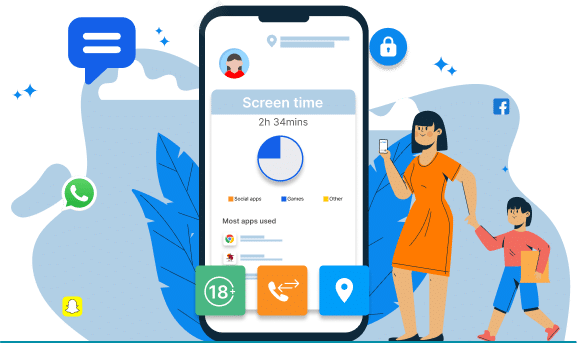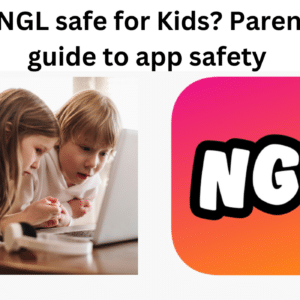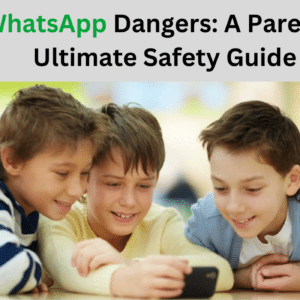
Kids today grow up in a world where phones and the internet are normal parts of life. However, this exposure comes with a big problem: online harassment. Kids can easily become targets of bad people on game platforms, social media sites, and message apps.
Especially when threats are mild or hidden behind phones, many parents aren’t fully aware of how to protect kids online. This article gives important information about how to spot signs of harassment, how to stay safe online, and how tools like TiSPY can keep kids safe from online threats.
What Is Online Harassment and How Does It Affect Children
People who abuse, threaten, stalk, or put pressure on someone online are engaging in online harassment. Most of the time, targets are especially likely to be children. For kids, this can look like being teased over and over in chat rooms, getting scary pictures or threats, or being manipulated by people who try to be friends.
Children may feel nervous, scared, or ashamed, among other strong emotional effects. These things can sometimes cause people to quit or have trouble in school. These things not only hurt their mental health but also hurt their pride and sense of self-worth in the long run. Awareness and parental care are necessary for online harassment protection for children.
Recognizing the Signs of Online Harassment in Children

Recognizing the warning signs of online harassment in children is the first step in ending abuse. Parents need to be on the watch for little signals of harassment since it frequently goes unchecked. Here are several important warning signs:
- Mood swings or getting angry quickly
- Avoiding digital gadgets or being scared when alerts show up
- Not wanting to or not being willing to talk about online relations
- Frequently deleting messages or clearing mobile data
- Requesting to delete or turn off social media accounts
- Problems sleeping or odd health problems
Children may have trouble with internet threats or cyberstalking if they act in these ways. Early diagnosis is essential to stop things from getting worse and to get help immediately.
Proven Online Safety Tips for Parents
It can make a huge difference for families to follow good online safety tips for parents. Here are some valuable methods that parents can use right away:
- Talk Openly About Online Risks: Make sure your child has a safe place to talk about bad experiences they’ve had online, especially with strangers, texts, or inappropriate material.
- Use Strong Privacy Settings: Allow only certain people to see and talk to your child online by turning on privacy settings on all of their gadgets and apps.
- Check Device Permissions Regularly: Check the rights your child gives apps, especially those that let them access cameras, locations, or contact lists.
- Set Clear Screen Time Limits: To balance your child’s life, conduct social media monitoring and set healthy rules for screen time. Limit their time spent online and support offline hobbies.
- Encourage Reporting of Suspicious Activity: Show your kid how to report and stop inappropriate content or people, and let them know it’s okay to speak out without being afraid.
- Teach Digital Manners and Boundaries: Teach your child proper online behavior, such as what to share and how to deal with peer pressure or online abuse signs.
Parents can find a good mix between trusting and protecting their kids with these tips. It makes sure that kids can be free online while staying safe.
How TiSPY Helps Prevent Online Harassment and Cyber Threats
Using reputable digital tools like TiSPY is one of the most effective ways to improve how to protect kids online. TiSPY is a complete parental control tool to prevent cyber threats for children while preserving trust.
Here’s what it offers with its advanced features:
- WhatsApp Tracker: Watches texts for signs of abuse or abusive language so parents can step in early.
- Instagram Tracker: Keeps an eye on your child’s private messages, friends, and picture tags that could expose them to online predators.
- Call Tracker: Gives information on people who call a lot, which can help parents spot any strange or suspicious trends.
- SMS Tracker: Notices when your child’s phone gets or sends dangerous or inappropriate texts.
- Location Tracker: Ensures child protection even outside of digital places by providing real-time location updates.
- App Usage Monitor: Finds use of possibly harmful apps, allowing for quick talks or limits.
TiSPY’s goal is not to spy but to keep kids safe. If you are clear about how you use it and have open conversations with your kids about it, these can be useful digital parenting tools.
Final Advice for Digital-Age Parenting
Online harassment protection for children is ultimately about relationships, not technology. Visibility tools like TiSPY are essential, but being emotionally available is just as important. Talk to them often, ask them questions, and back them without passing judgment.
Tell your kid they’re not alone and that they can trust you at any time. Monitoring isn’t an invasion; when done with care, it’s a way to be a responsible parent in the digital world.
Conclusion
To stop online harassment, individuals need to be aware of it, talk to each other, and use technology to help. To protect their kids online, families can look out for early warning signs, follow online safety tips for parents, and use TiSPY’s tracking tools. Protect your kids from the risks they can’t see on the internet by watching them more carefully right now.




